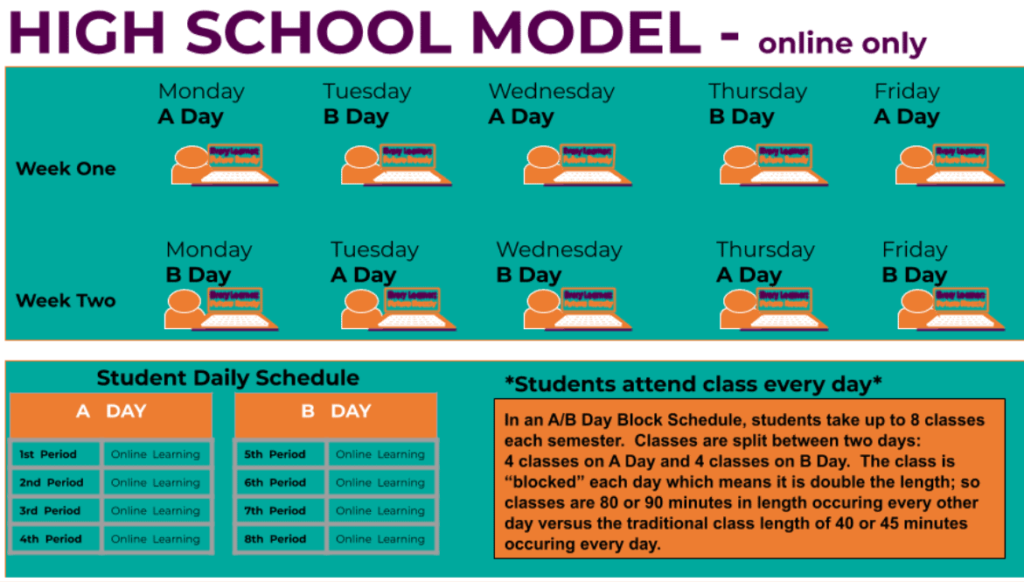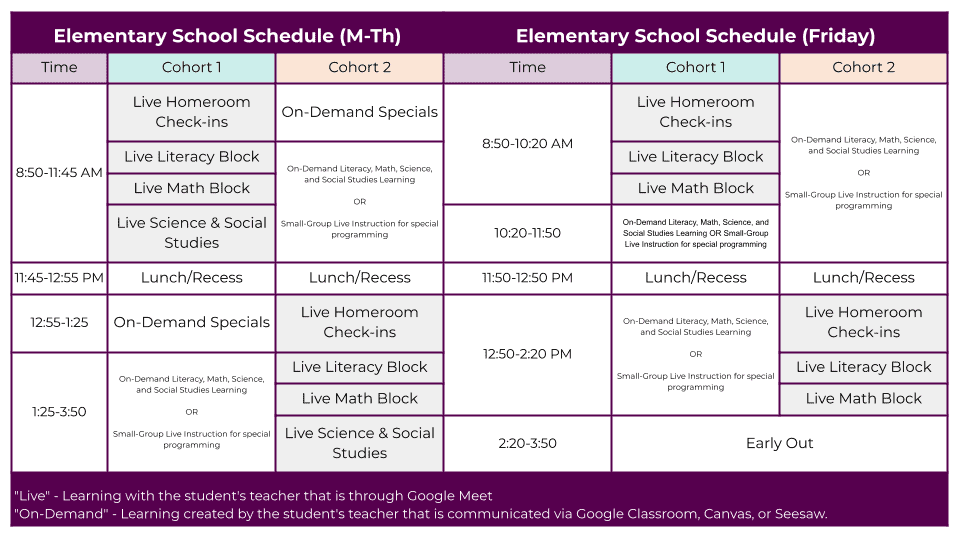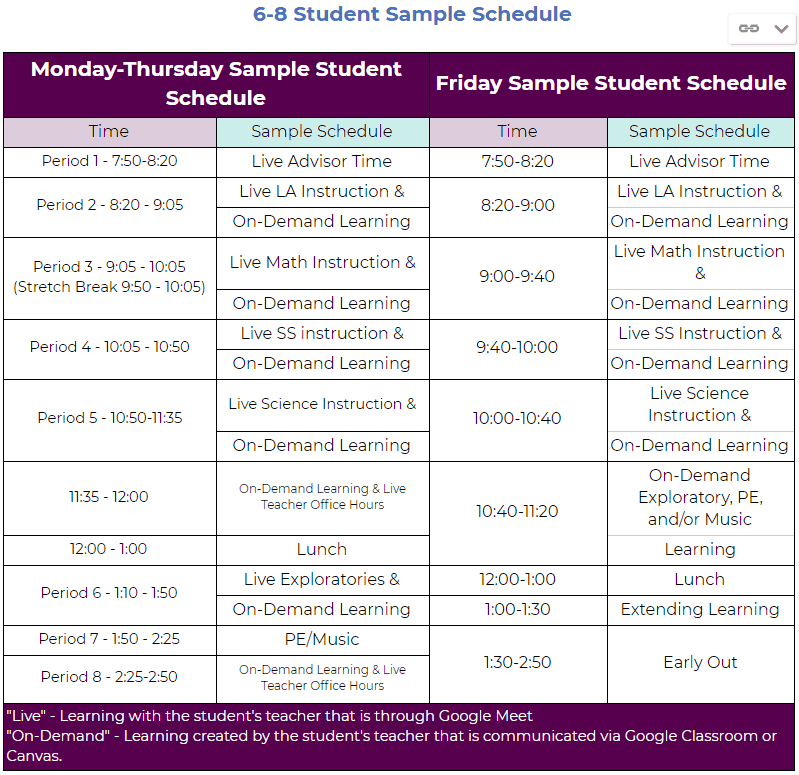A Reliable Hybrid Learning Model: Cedar Rapids Schools Respond to Setbacks

Last September, Cedar Rapids Community School District (CRCSD) Superintendent Noreen Bush delivered an impossibly optimistic message to the students, families, and staff that make up their learning community.
This optimism came on the heels of a seemingly unending string of challenges: from the global shift to remote learning, to battling cancer, all the way to a severe windstorm that rattled her district and community to the core. She took these obstacles in stride and still maintains that the district is “a hope spot” for the entire community—an imperative mindset to keep moving forward.
When CRCSD published its ambitious future-ready facility master plan in 2018, the district rallied around Superintendent Bush’s vision to repurpose learning spaces across the district to best serve their 17,000 students with a community hub model. As bold as that plan was, it didn’t forecast simultaneously negotiating a global pandemic and a destructive storm as factors and sharing their evolving strategy with the entire learning community. Already attuned to the diverse needs of an Iowa community with a sizable population of multinational refugees, district leaders were accustomed to considering how to communicate with households in five different languages including French, Swahili, and Spanish. In short, their situation was complicated.
In response to the pandemic in March of 2020, CRCSD leadership pivoted to keeping students and staff safe for the remainder of the school year and launched their “Return to Learn” website to explain their intent to provide “the best instructional environment for your child/children (in-person, remote, or Cedar Rapids Virtual Academy (CRVA) based on the choices offered by the district.” Pre-COVID, the district was projecting 250 applicants to CRVA from their middle and high schools. Once the pandemic’s long timeline began to emerge, 700 students applied and with that shift in demand for online learning, the district prepared to meet the demand.
Such measures included a household technology survey from the Iowa DOE helping make a case for CRCSD’s broadband needs to the Governor’s Emergency Education Relief fund. The survey results showed 2,000 households in need of better internet service so the team began to prepare for this technical undertaking.
Then in August, just as their plan for returning to school was about to ramp up, an unusual storm of wind and thunderstorms hit. Designated by meteorologists as a “derecho” for its straight-line gale-force winds, upwards of 140mph, the massive storm wreaked havoc across the midwest, with Cedar Rapids taking the brunt with damaged buildings, leveled crops, and uprooted trees. CRCSD’s facilities were hit hard by the storm. Each of their 32 buildings sustained some damage, including one high school that took nearly ten months to restore.
CRCSD’S Executive Director of the Office of Teaching and Learning, John Rice, focused on how these combined factors would impact their plan for instructional delivery. Rice’s team had their work cut out for them but leaned on his prior experience designing blended instructional activities when he worked for the District of Columbia Public Schools. As it has been for all school leaders of recent, the stakes were high: recovering if not salvaging a year of learning for as many students as possible.
Connecting to a Network of Experts
Rice and his team looked externally for support as they navigated their response to the pandemic. The first phase was solely-focused on making certain all members of the learning community were safe from harm and made aware of the measures being taken to adhere to safety guidelines from the CDC and the state of Iowa relative to positivity rates. In an effort to expand its knowledge base, Cedar Rapids sought support through the Always Ready for Learning Coaching Network, a group of education experts organized by The Learning Accelerator (TLA).
Later that spring, Cedar Rapids joined TLA’s Strategy Lab, a new networked learning community supporting school systems with recovery and long-term planning for resilient and equitable teaching and learning. Through the Strategy Lab, Cedar Rapids received specific guidance from The Parabola Project, a joint venture from TLA and Harvard and Brigham’s Ariadne Labs. Their health guidance helped Cedar Rapids provide their community with protocols for safely approaching in-person learning. This set the stage for the ‘20-’21 school year to be able to switch to socially-distanced in-person learning (when and where they were able) across their 31 schools and with over 1,000 teachers.
CRCSD Responds With Fully-Online, Hybrid, and In-Person Instructional Approaches
What emerged for the fall of 2020 was a delicate balance of in-person, hybrid, and fully-online options from the district. Parents were afforded the choice between all three options based on their needs and their personal comfort with assuming the risks of COVID.
With a safety plan coming together, the strategic planning shifted to adjusting instructional practice for Rice and his fellow leaders. Prior to the pandemic, Cedar Rapids’s focus had been equipping their educators to differentiate and personalize instruction, having already started a shift away from traditional to standards-based grading policies. With some initial guidance from the Strategy Lab, the team compiled ample, high-quality research- and data-based thinking. Together, the team devised approaches to the difficult issue of keeping students and staff safe while staying as true as they could to the district strategic plan they’d committed to before the pandemic. This meant layering on top of an already-emerging blended learning strategy some adjustments.
The largest initiative here was the Cedar Rapids Virtual Academy (CRVA) for middle and high school students. The Iowa Department of Education approved the district’s plans to offer a rigorous and standards-aligned model to give Cedar Rapids families one more option to consider, keeping in mind the eventual end of the pandemic. CRVA has been well-received as a viable option for families regardless of COVID or other interruptions to in-person learning.
After experimenting and deliberating to design new delivery options, the CRCSD team published sample hybrid schedule options for each, elementary, middle, and high school that show the relationship between learning occurring in-person or online (both synchronous and asynchronous):
Figuring out schedules that logistically worked wasn’t the extent of it. The team had to assume a generous stance towards equity and develop processes for solving infrastructural issues with connectivity en masse, provide technical assistance and guidance for families logging in for blended learning, and ensure students working from home had the same access to in-person learning materials.
To begin with, the district expedited its plan to extend their 1:1 program to elementary school students. This meant reallocating significant dollars from the district’s general fund to purchase devices, service plans, and accessories. Fortunately, they were able to recover that investment from the CARES Act. Their subsidizing of costs continued with grants and arrangements with local ISP providers to ensure each family had high-quality broadband, including providing 2,000 wifi hotspots to families.
With infrastructural solutions in place for learning from home, the district drafted and executed plans for harnessing the dramatic increase in family engagement. This entailed writing and publishing instructions for lessons online as well as sending home hard copies. Then, training calls were held to go even further in ensuring that the parents felt comfortable and supported as learning resumed. And they did all of this in the five different languages represented in the district. The district was careful to survey their families extensively and through a variety of channels to make certain they’d surfaced as many needs as possible to keep online learning going as well as continuing to be able to offer the wraparound services families needed.
Lastly, the district had to expand the curriculum budget to buy exponentially more learning materials typically relegated as classroom sets of texts, devices, and manipulatives. These texts, art supplies, and other paper and plastic learning objects were ordered, sterilized, and repackaged every six weeks and sent home with families.
Transforming Teaching & Learning Across the District
With safety and hybrid scheduling guidelines established, Cedar Rapids could turn their attention to making adjustments to instruction. CRCSD was already pursuing a goal to gradually shift to a personalized, competency-based learning model. Prior to the pandemic, the team took cues from schools like Summit Public Schools and began adapting those ideas to the upper grades initially, then before the launch of the ‘20-’21 school year, did the same for elementary grades as well. This indicated the need to get devices into the hands of each elementary learner and rapidly aid elementary teachers with moving their instruction into Google Classroom.
With the district concurrently in the early stages of a multi-year educational technology plan, the pandemic greatly accelerated the district’s preconceived plans for device rollout, teacher professional learning, and use of digital tools. Working with the district CTO, the team focused on developing and adapting content for virtual instruction based on school models from across the country and their interactions with other districts in the network. An early win has been the positive reception of blended learning course and activity templates or “shells” in their district-wide use of Google Classroom for younger learners and Canvas for upper-grade levels. This provides momentum and consistency for the learner as they switch from one virtual classroom to another, which protects student engagement and reduces the weariness of teachers designing online instruction for the first time this past year.
A Philosophical Shift Towards Competencies Over Content
With all these converging changes, district leaders notice educators thinking differently about how they move through the curriculum. There’s a shift underway from a “march through the textbook” fashion of following the pacing guide to one that’s driven by standards. Rice notes that staff have been a lot more attentive to that shift and allowing for different modalities of teaching and learning.
Rice said that one of the most challenging time periods during the summer of 2020 was figuring out what professional learning should look like in the late summer when teachers returned for the fall semester. Through expert sessions with the Strategy Lab, Rice now had access to resources such as those from the CCSSO including a guide for managing change in a school or district’s professional learning approach. Cedar Rapids also gained an on-call consultant from Rhode Island’s Highlander Institute to offer guidance throughout the school year.
Together, these resources have helped their team transfer their vision for a more learner-centered approach for students to their teachers. Now they are seeing a professional learning culture that is educator-driven and allows teachers to self-pace their own professional development, letting the learning itself be the driver.
Outcomes to Build Upon
The results from Cedar Rapids instructional changes have shown what is possible for districts seeking change in incredibly challenging circumstances. Rice is transparent that the current approach isn’t ideal; however, it keeps equity at the forefront as they continue to forge forward against the challenges, refining as they go, ensuring each and every student and household is equipped to participate in the newly designed learning environment and experiences.
Despite the incredible challenges of 2020, Cedar Rapids has seen some benefits from the experience. Parental engagement has increased, and the district hopes to continue to nurture this trend as learning returns to their repaired buildings. Through the Strategy Lab, CRCSD is piloting student goal-setting with the aim of improving student engagement and ownership of learning, especially in remote learning environments. Pending the results of the pilot, this approach could be scaled more broadly to other grade levels. This is concurrent with expanding CRVA to the elementary grade levels so even more students can have access to online learning.
Additionally, the district is asking teachers, administrators, students, and families what practices from this past year they’d like to keep in future years, such as keeping the school schedules that were adopted during the pandemic for high school (block scheduling) or elementary specials classes (six-week rotations of art, music, and PE rather than every other day). Cedar Rapids is also evaluating what practices should be discontinued, such as having all teachers coming into an auditorium for synchronous professional learning and instead, continue moving towards flexible, asynchronous, personalized professional learning. Thus bringing the same philosophy to adult learning that the Cedar Rapids staff has worked so hard to make possible for their students.
Key Takeaways
What worked for Cedar Rapids can transfer to many schools or districts looking to improve their instructional delivery. Here are the key takeaways from their experience:
- Iterate, delegate, automate with agility: Infusing your school/district with a culture of continuous improvement and innovation in the face of challenges takes time, dedication, and intentionality. CRCSD’s leadership committed to iterating quickly when new variables emerged, built templates for all things repeatable, and automated anything that could be delegated to technology.
- Don’t go it alone; ask for help: Reaching out to other like-minded educators has been a long-standing part of education’s professional culture, but the isolation of 2020 challenged our sense of a network’s value as things became hyperlocal. An infusion of new ideas and energy from others attempting to innovate new approaches is the benefit CRCSD received from others in The Strategy Lab.
- Share the wealth of your discoveries: Your solutions may serve others’ problems and having a healthy forum for exchanging discoveries was critical to CRCSD’s innovation in 2020. Whether it’s a quorum of neighboring school leaders or a formal network like those from TLA, exchange of approaches and data analysis expands efficacy quickly.
- Learning occurs in the student, not the building: Because of the storm damage that came after a stressful summer and before an inauspicious launch of the new school year, CRCSD had no choice but to rely entirely on their online instruction at the start. The staff and community rallied and even without buildings, the school continued because learning occurs in the student!
- Keep sight of your plans: the variables that were out of control for CRCSD were anything but enviable. However, they didn’t allow the pandemic and the storm to derail their goals for long-term planning to improve learning and services for their families.
- Stay hopeful! If CRCSD’s superintendent can take on such challenges and keep learning moving forward, it bodes well for all others contending with similar issues. Prioritize morale and make your district a “hope spot” in your communities as well.
For more, see:
- Phoenix Charter Academy on The Primary Person Advisory Model
- Teaching Through Change, Stories of Resilience: Austin ISD
- Building the Car While We’re Driving It: Lessons Learned and Back-to-School Priorities in Four Districts
Stay in-the-know with innovations in learning by signing up for the weekly Smart Update. This post includes mentions of a Getting Smart partner. For a full list of partners, affiliate organizations and all other disclosures, please see our Partner page.







0 Comments
Leave a Comment
Your email address will not be published. All fields are required.